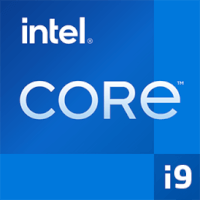
The processor Intel Core i9-10980XE is developed on the 14 nm technology node and architecture Cascade Lake. Its base clock speed is 3.00 GHz, and maximum clock speed in turbo boost - 4.30 GHz. Intel Core i9-10980XE contains 18 processing cores. To make a right choice for computer upgrading, please get familiar with the detailed technical specifications and benchmark results. Check socket compatibility before choosing.
 CPU Cores and Base Frequency CPU Cores and Base Frequency |
||||
|---|---|---|---|---|
| Frequency | 3.00 GHz | Cores | 18 | |
| Turbo (1 Core) | 4.80 GHz | CPU Threads | 36 | |
| Turbo (All Cores) | 4.30 GHz | |||
| Hyperthreading ? | Yes | Overclocking ? | Yes | |
| Core architecture | normal | |||
 Internal Graphics Internal Graphics |
|
|---|---|
| GPU name | no iGPU |
| GPU frequency | |
| GPU (Turbo) | No turbo |
| Generation | |
| DirectX Version | |
| Execution units | |
| Shader | |
| Max. Memory | -- |
| Max. displays | |
| Technology | 14 nm |
| Release date | |
 Hardware codec support Hardware codec support
|
|
|---|---|
| H264 | No |
| H265 / HEVC (8 bit) | No |
| H265 / HEVC (10 bit) | No |
| VP8 | No |
| VP9 | No |
| AV1 | No |
| AV1 | No |
| AVC | No |
| JPEG | No |
 Memory & PCIe Memory & PCIe
| ||||
|---|---|---|---|---|
| Memory type | DDR4-2933 | |||
| Max. Memory | 256 GB | |||
| Memory channels | 4 | ECC | No | |
| PCIe version | 3.0 | PCIe lanes | 48 | |
 Thermal Management Thermal Management
| ||||
|---|---|---|---|---|
| TDP (PL1) | 165 W | TDP (PL2) | ||
| TDP up | -- | TDP down | -- | |
| Tjunction max | 86 °C | |||
 Technical details Technical details
| |
|---|---|
| Instruction set (ISA) | x86-64 (64 bit) |
| Architecture | Cascade Lake |
| L2-Cache | -- |
| L3-Cache | 24.75 MB |
| Technology | 14 nm |
| Virtualization | VT-x, VT-x EPT, VT-d |
| Release date | Q4/2019 |
| Socket | LGA 2066 |
Cinebench R23 is the successor of Cinebench R20 and is also based on the Cinema 4 Suite. Cinema 4 is a worldwide used software to create 3D forms. The single-core test only uses one CPU core, the amount of cores or hyperthreading ability doesn't count.
Cinebench R23 is the successor of Cinebench R20 and is also based on the Cinema 4 Suite. Cinema 4 is a worldwide used software to create 3D forms. The multi-core test involves all CPU cores and taks a big advantage of hyperthreading.
Cinebench R20 is the successor of Cinebench R15 and is also based on the Cinema 4 Suite. Cinema 4 is a worldwide used software to create 3D forms. The single-core test only uses one CPU core, the amount of cores or hyperthreading ability doesn't count.
Cinebench R20 is the successor of Cinebench R15 and is also based on the Cinema 4 Suite. Cinema 4 is a worldwide used software to create 3D forms. The multi-core test involves all CPU cores and taks a big advantage of hyperthreading.
Geekbench 5 is a cross plattform benchmark that heavily uses the systems memory. A fast memory will push the result a lot. The single-core test only uses one CPU core, the amount of cores or hyperthreading ability doesn't count.
Geekbench 5 is a cross plattform benchmark that heavily uses the systems memory. A fast memory will push the result a lot. The multi-core test involves all CPU cores and taks a big advantage of hyperthreading.
Some of the CPUs listed below have been benchmarked by CPU-Benchmark. However the majority of CPUs have not been tested and the results have been estimated by a CPU-Benchmark’s secret proprietary formula. As such they do not accurately reflect the actual Passmark CPU mark values and are not endorsed by PassMark Software Pty Ltd.
Blender is a free 3D graphics software for rendering (creating) 3D bodies, which can also be textured and animated in the software. The Blender benchmark creates predefined scenes and measures the time (s) required for the entire scene. The shorter the time required, the better. We selected bmw27 as the benchmark scene.
Cinebench R15 is the successor of Cinebench 11.5 and is also based on the Cinema 4 Suite. Cinema 4 is a worldwide used software to create 3D forms. The single-core test only uses one CPU core, the amount of cores or hyperthreading ability doesn't count.
Cinebench R15 is the successor of Cinebench 11.5 and is also based on the Cinema 4 Suite. Cinema 4 is a worldwide used software to create 3D forms. The multi-core test involves all CPU cores and taks a big advantage of hyperthreading.